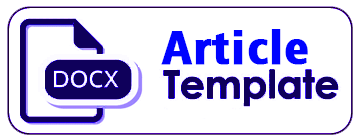The Impact of VAT Rate Increases, Tax Literacy, and Financial Literacy on Potential Value Added Tax Revenue
DOI:
https://doi.org/10.64530/ijbams.v1i2.16Keywords:
Tax Literacy, VAT Rate Increase, VAT Revenue PotentialAbstract
This study aims to examine the effect of the increase Value Added Tax (VAT) rates, tax literacy, and financial literacy on potential VAT reveue. This study uses a quantitative approach with primary data obtained through the distribution of questionnaires to 101 Micro, Small, and Medium Enterprises (MSMEs) in Kalisongo Village, Malang Regency. The sampling technique was purposive using the Slovin formula. Data analysis was performed using multiple linear regression using IBM SPSS Statistic 26 software. The results show that the increase in VAT rates and financial literacy have a significant effect on potential VAT revenue. However, tax literacy does not have a significant effect partially.Simultaneously, these three variabels have a significant effect on potential VAT revenue. This finding demonstrates the importance of improving financial literacy and evaluating VAT rate policies in efforts to optimize state revenue
References
Arianti, A., & Azzahra, N. (2020). Literasi Keuangan dan Pengelolaan Keuangan UMKM. Jurnal Keuangan Dan Bisnis, 12(1), 45–56.
BPS. (2023). Statistik Keuangan Pemerintah Pusat. www.bps.go.id
Ebrill, L., Keen, M., Bodin, J. P., & Summers, V. (2001). The Modern VAT. International Monetary Fund.
Ilham, R. (2024). Literasi Pajak dan Kepatuhan Wajib Pajak UMK. Jurnal Akuntansi Dan Keuangan Publik, 9(1), 14–23.
Islami A. (2023). Analisis Faktor yang Mempengaruhi Penerimaan PPN UMKM. Jurnal Ilmu Administrasi, 15(2), 22–34.
Jensen, M. C., & Meckling, W. H. (1976). Theory of the firm: Managerial behavior, agency Costs and ownership structure. Journal of Financial Economics, 3(4), 305–360.
Kemenkop UKM RI. (2023). Data Statistik UMKM Tahun 2022–2023. www.depkop.go.id
Kementrian Keuangan RI. (2022). Laporan Kinerja DJP. www.kemenkeu.go.id
Kurniawan, R., & Handayani, S. (2020). Potensi dan Efektivitas Pajak di Indonesia. Jurnal Ekonomi Dan Kebijakan Fiskal, 11(2), 33–41.
Kusuma D. (2020). Pengaruh Literasi Pajak terhadap Kepatuhan Wajib Pajak. Jurnal Pajak Dan Perpajakan Indonesia, 4(3), 67–75.
Lestari, P., Indrawati, N. K., & Nurbatin, D. (2023). Pelatihan Akuntansi Keuangan pada UMKM Desa Kalisongo Kecamatan Dau Kabupaten Malang. Jurnal Edukasi Pengabdian Masyarakat, 2(1), 9–16.
Lusardi, A., & Mitchell, O. S. (2014). The Economic Importance Of Financial Literacy: Theory And Evidence. Journal of Economic Literature, 52(1), 5–44.
OECD. (2020). Consumption Tax Trends 2020. OECD Publishing.
Otoritas Jasa Keuangan. (2022). Survei Nasional Literasi dan Inklusi Keuangan 2022. www.ojk.go.id
R, I. (2023). Literasi Pajak dan Kepatuhan UMKM. Jurnal Akuntansi Dan Keuangan Publik, 9(14–23).
Risti D. (2022). Literasi Keuangan dan Kepatuhan Pajak UMKM. Jurnal Ekonomi Dan Bisnis, 10(3), 87–96.
Ross, S. A. (1973). The economic theory of agency: The principal’s problem. The American Economic Review. The American Economic Review, 3(4), 134–139.
Saad, N. (2014). Tax knowledge, tax complexity and tax compliance: Taxpayers’ view. Procedia-Social and Behavioral Sciences, 1069–1075.
Saharani, N., & Sari, R. (2023). Ketidakpatuhan Pajak UMKM di Indonesia. Jurnal Perpajakan Indonesia, 6(1), 31–41.
Sustiyo, A., & Hidayat, W. (2020). Dampak Kenaikan Tarif PPN terhadap UMKM. Jurnal Kebijakan Ekonomi, 8(2), 55–63.
Downloads
Published
Issue
Section
License
Copyright (c) 2025 Wahyu Mustika Rani

This work is licensed under a Creative Commons Attribution 4.0 International License.






